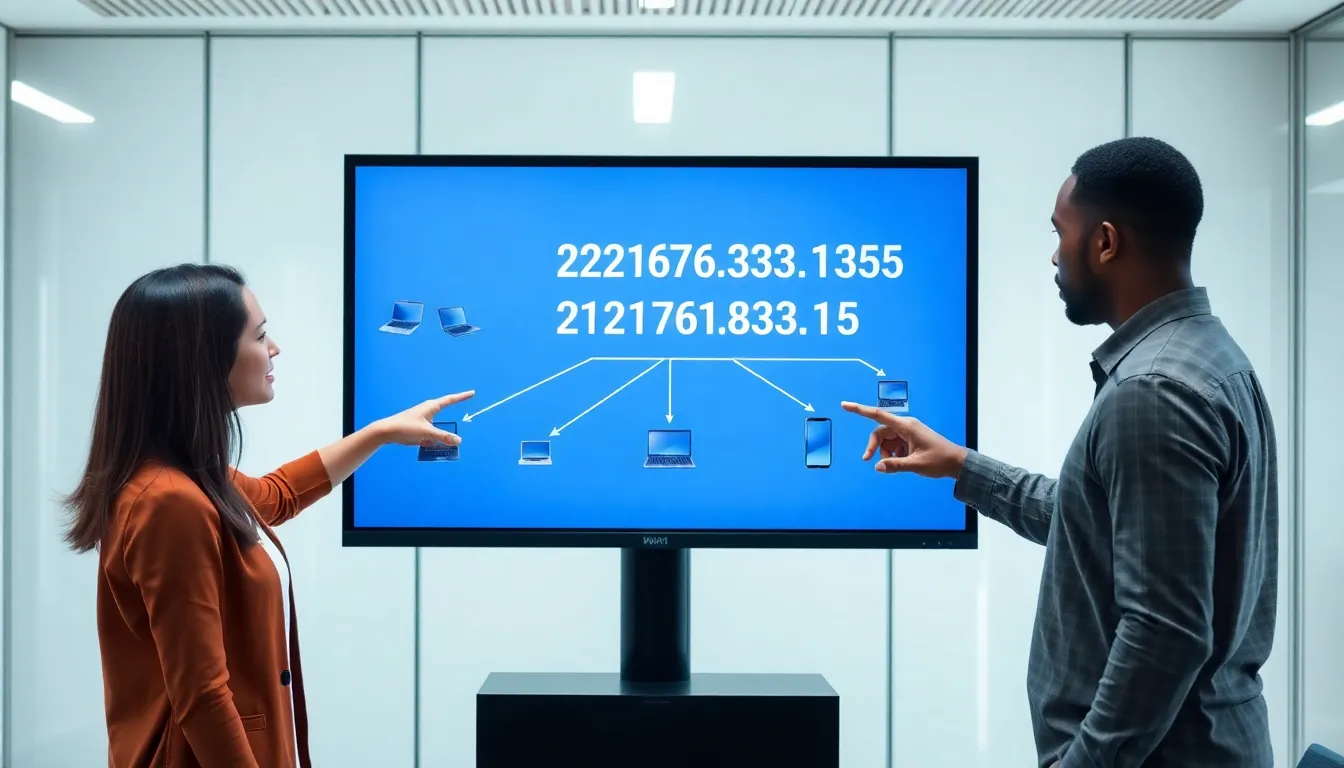Table of Contents
ToggleWhen scrolling through the internet, we often take the invisible roads of the World Wide Web for granted. Ever wondered how your device communicates with servers around the globe? Enter the magic of IP addresses. Specifically, let’s zoom in on 122.176.83.125. It may seem just like a jumble of digits, but there’s a lot more lurking beneath the surface. Ready to unravel the mystery? Let’s immerse and explore this intriguing IP address.
What Is an IP Address?

An IP address, or Internet Protocol address, serves as a unique identifier for a device on a network. Think of it as a telephone number for your computer or smartphone. Just like you need a phone number to reach someone, devices require an IP address to communicate with one another.
There are two main versions of IP addresses: IPv4 and IPv6. The former, which is more common, consists of four sets of numbers separated by periods. For example, 122.176.83.125 is an IPv4 address. IPv6, on the other hand, was developed to accommodate the growing number of devices connected to the internet, featuring a far more complex format.
In essence, an IP address is vital for directing data where it needs to go. Without it, sending or receiving information would be as chaotic as trying to deliver mail without addresses.
Types of IP Addresses
IP addresses can be classified into several categories, primarily focusing on their usage and how they’re assigned. Let’s break it down:
- Public IP Address: This type is used when devices connect to the internet. It can be accessed from anywhere in the world, making it essential for web servers and routers.
- Private IP Address: Found within local networks, these addresses aren’t exposed to the internet. Think of them as the internal phone numbers of users connected to a single network.
- Dynamic IP Address: Assigned temporarily by a network when a device connects, these addresses can change with each session. They are efficient for ISPs, as they allow for better management of available IPs.
- Static IP Address: Unlike dynamic addresses, static IPs remain constant. They’re typically used for hosting websites or email servers, as they ensure consistent contact.
- Reserved IP Address: Some IP addresses are permanently reserved for specific uses, such as gateways or broadcast addresses within a network.
Geographical Location of 122.176.83.125
Determining the geographical location of an IP address can provide insights into where a device is interacting with the internet. In the case of 122.176.83.125, this address is primarily registered in India. Although the exact location can vary based on dynamic assignments, general information about the region can still be gleaned.
Services that perform IP geolocation use databases to map IP addresses to geographical regions. This mapping can determine not just the country but sometimes even the city level where a user might be located. It’s an essential tool in understanding traffic sources for websites, enhancing marketing efforts, and improving user experience by offering localized content.
Common Uses of the IP Address 122.176.83.125
The IP address 122.176.83.125 serves various purposes, depending on the context in which it is used. It might frequently be found in web hosting, gaming, or even daily online communication. Here are some common applications:
- Web Hosting: This IP could belong to a server hosting various websites. When users input a web address into their browser, the requested information travels over to 122.176.83.125, leading them to the intended site.
- Gaming Servers: Online games require stable connections. Many gamers rely on IP addresses like this one to join or host multiplayer games.
- VPN Services: Users might be rerouted through this IP when connecting to VPNs to mask their actual location. This technique promotes privacy and security.
Security Considerations and Implications
When dealing with IP addresses, one needs to tread carefully. Understanding the security implications of 122.176.83.125 can shed light on potential vulnerabilities.
For instance, cybercriminals often scan ranges of IP addresses for weaknesses. If 122.176.83.125 belongs to a server that isn’t adequately secured, it might become a target for malware attacks or unlawful access.
Also, individuals can use IP tracking to gather information about internet users. While this can be beneficial for network management or customer service, it raises privacy concerns as well.
Implementing strong security practices, such as firewalls, and regularly updating software, can help protect against unauthorized access and data breaches.
How to Trace an IP Address
Tracing an IP address like 122.176.83.125 can be valuable for troubleshooting or investigating suspicious activity. Here’s a brief guide on how to perform an IP trace:
- Use IP Lookup Tools: Numerous online tools allow users to input an IP address and receive details including the geographical location and information about the ISP.
- Ping the IP: Using the command line interface, commands like ‘ping’ can help check connectivity to the IP.
- Use Traceroute: This command-line tool shows the route packets take to reach a destination, revealing valuable data about network latency, possible bottlenecks, and geographical hops in between.




